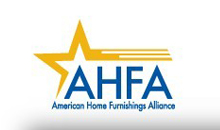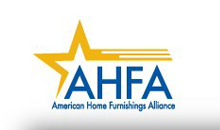AHFA: Canada to begin furniture tip-over safety compliance testing
Source:Furniture Today
The American Home Furnishings Alliance has begun alerting its members that Canada will begin testing free-standing clothing storage units to determine if they comply with a voluntary ASTM furniture stability standard aimed to prevent tip overs.
The American Home Furnishings Alliance has begun alerting its members that Canada will begin testing free-standing clothing storage units to determine if they comply with a voluntary ASTM furniture stability standard aimed to prevent tip overs.
In a June 16 member bulletin, AHFA said that the Consumer Product Safety Program of Health Canada has notified it of its proposed product inspection and testing efforts of free standing clothing storage units more than 30 inches.
Canada will use the voluntary standard, also known as ASTM (F2057), to evaluate the targeted products, which include chests, drawer chests, dressers and bureaus mroe than 30 inches high.
The AHFA website describes two stability tests associated with this standard. The first requires that the piece not tip when all the doors are opened at 90 degrees and all drawers are opened to the stop. If there is no stop, they must be opened two-thirds of the way.
The second test requires that the piece not tip when each drawer is opened to the stop and a 50-pound weight is gradually applied to the front of a drawer. For doors, the weight is applied to the outer edge of the door, the AHFA website stated.
Pieces must also have a warning label attached where it can be seen when the piece is in use including on the inside of the top drawer, and tip-over restraints must be included – with instructions – for each piece of furniture.
According to the U.S. Consumer Product Safety Commission, a child dies every two weeks when a TV, piece of furniture or appliance falls over on him or her. It said televisions account for 70% of these incidents, and furniture and appliances account for 26% and 4% respectively.
In addition, such tip overs account for 2,117 injuries per month and 25,400 per year.
To help prevent these accidents CPSC has a public safety campaign called “Anchor It” that advises consumers to anchor the item to a wall or other stable structure in the home.
While AHFA said that a time frame has not been specified, it told members that products sold in Canada that do not meet the performance criteria of the standard will be subject to compliance and enforcement actions. These actions, the AHFA said, may include seizure, mandatory recalls, financial penalties and criminal prosecution.
“Importers, manufacturers and retailers of free-standing clothing storage units all are considered responsible parties in the safety of products marketed in Canada,” the AHFA said in its bulletin.
The action is related to the requirements of Canada’s Consumer Product Safety Act, which “prohibits the manufacture, import, advertising or sale of a consumer product that is a danger to human health or safety.”
AHFA said that the Canadian agency told it that complying with the standard does not automatically mean a product will be considered safe, “but failing to meet the performance criteria in a standard is a strong indicator that a product may pose a danger to human health or safety.”
The AHFA said that the agency had not provided information on when the testing will begin. However, it said that all warning labels for product sold in Canada must be in English and French.
The bulletin falls on the heels of proposed legislation introduced by Sen. Robert Casey Jr. (D-Pa.) on June 9 that calls on the CPSC to adopt a product safety rule for free-standing clothing storage units. This would require the CPSC to determine whether the current voluntary ASTM furniture stability standard “adequately protects children from tip-over related death or injury” and whether it is “likely to be substantially complied with by furniture manufacturers.”
(Source: Furniture Today Author: Thomas Russell)





 沪公网安备31010402003309号
沪公网安备31010402003309号



